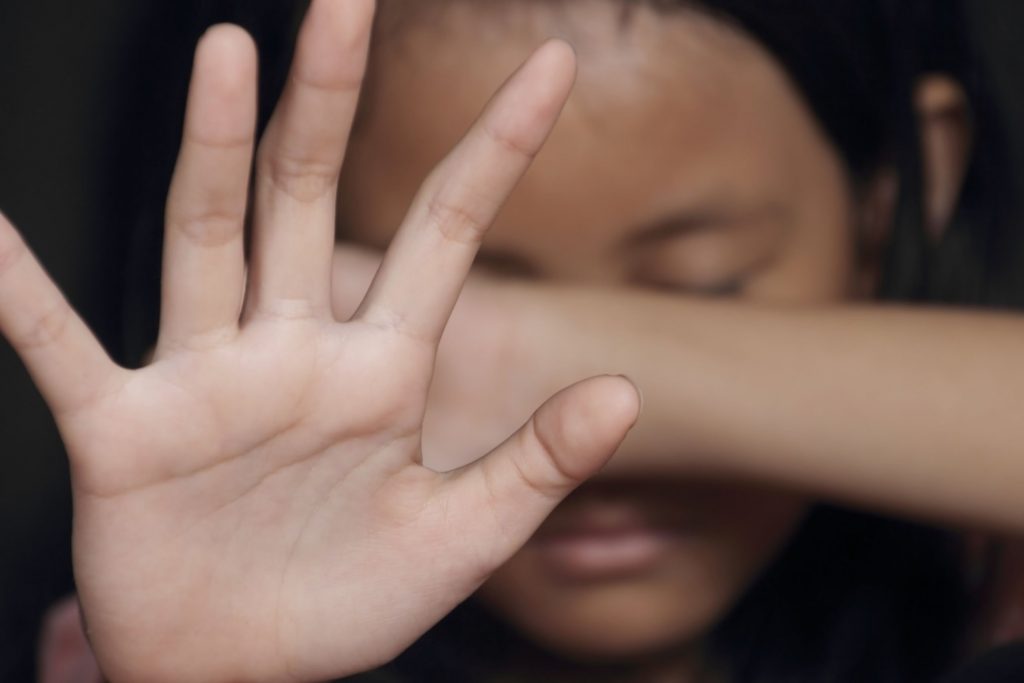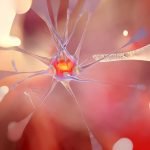Node Smith, ND
People with maltreatment experiences in their childhood have a changed perception of social stimuli later as adults. This is what scientists from the Division of Medical Psychology at the University of Bonn have discovered. Traumatized people found touch stimuli less comforting than people without trauma. They also maintained a greater social distance toward strangers. In addition, the researchers discovered changes in the activation of certain brain areas. The results may open up options for new therapies and are now published in The American Journal of Psychiatry.
Maltreatment experiences in childhood have a changed perception of social stimuli later as adults
Those who were humiliated, beaten or sexually abused in childhood are more likely to suffer from mental illnesses such as depression or anxiety attacks in adulthood than people who were spared these experiences at a young age. Numerous studies show this. But what are the reasons for this greater vulnerability? Do experiences of violence as a child possibly lead to a permanently changed perception of social stimuli? Scientists from the Department of Medical Psychology at Bonn University Hospital (UKB) and their colleagues from the Ruhr University Bochum and Chengdu (China) have investigated this question.
Researchers interviewed a total of 120 people about their experiences
The researchers interviewed a total of 120 people about their experiences with violence and accompanying illnesses. A total of 92 adults (64 women) were included in the study. The prerequisite was that the participants neither suffered from neurological diseases nor took medication to exclude these influences. The scientists tested sensory perception by stroking the naked skin of the shins with one hand with either a fast or a slower movement. “Touch is of central importance because it influences brain development, provides a feeling for one’s own body and serves as a stress regulator,” says Dr Dirk Scheele of the UKB’s Division of Medical Psychology.
Nerve fibers are specialized for different stimuli
Interpersonal contact is mediated via two different nerve fibers in the skin: Aβ fibers transmit the sensory information and respond primarily to faster touches, while C tactile fibers transmit the emotional well-being and are activated primarily by slow touches, explains lead author Ayline Maier. The test subjects lay in the brain scanner during the experiments and could not see the experimenter who performed the movements. His hands were in cotton gloves to avoid direct skin contact. The functional magnetic resonance imaging system recorded the activity of the brain areas. After each measurement, the test persons were asked how comforting the touches were.
More pronounced the maltreatment experiences during childhood, the more strongly two brain regions reacted to rapid touches
The more pronounced the maltreatment experiences during childhood, the more strongly two brain regions reacted to rapid touches. The somatosensory cortex is located in the brain approximately above the ear and registers where a touch occurs. “This area encodes haptic sensations and is involved in the preparation and initiation of body movement – for example, pulling away the leg that has been touched,” says Maier. The posterior insula cortex is an area deep in the brain behind the temple that is responsible for all body perceptions such as touch, hunger, thirst and pain.
Scheele summarizes the result with: “In traumatized people, the activity in these two areas in response to rapid touches is significantly increased.”
The hippocampus was more weakly activated during slow touches
The hippocampus, on the other hand, was more weakly activated during slow touches when traumatic experiences occurred in childhood. The brain structure, similar to a seahorse, serves the formation of memory and thus also stores negative and positive associations of stimuli. “Specifically, the activity of the hippocampus could reflect how rewarding a touch was in the experiment,” explains Maier. More traumatized participants might find a slow and thus more emotionally charged touch less pleasant.
Scientists also studied social distance
In addition, the scientists investigated the social distance. The participants were asked to walk up to a person they did not know and to stop when the distance was just about perceived as pleasant. It was significantly larger in more severely traumatized people – on average by twelve centimeters.
Potential for new therapies
“The results show that the perception and sensory processing of people with traumatic childhood experiences have changed,” says Scheele, summarizing the results. Touching is less comforting compared to people without maltreatment experience. As control analyses show, it is not the concomitant diseases such as depression or anxiety attacks that are responsible for this, but the traumatization itself. “However, this result may also open up opportunities for new therapies: Supplementary body-based therapies in a safe environment could make it possible to retrain this stimulus processing,” suspects Maier. However, this potential would first have to be investigated in more detail in further studies.
Source:
- Maier, A. et al. (2019) Association of Childhood Maltreatment With Interpersonal Distance and Social Touch Preferences in Adulthood. The American Journal of Psychiatry. doi.org/10.1176/appi.ajp.2019.19020212.
 Node Smith, ND, is a naturopathic physician in Humboldt, Saskatchewan and associate editor and continuing education director for NDNR. His mission is serving relationships that support the process of transformation, and that ultimately lead to healthier people, businesses and communities. His primary therapeutic tools include counselling, homeopathy, diet and the use of cold water combined with exercise. Node considers health to be a reflection of the relationships a person or a business has with themselves, with God and with those around them. In order to cure disease and to heal, these relationships must be specifically considered. Node has worked intimately with many groups and organizations within the naturopathic profession, and helped found the non-profit, Association for Naturopathic Revitalization (ANR), which works to promote and facilitate experiential education in vitalism.
Node Smith, ND, is a naturopathic physician in Humboldt, Saskatchewan and associate editor and continuing education director for NDNR. His mission is serving relationships that support the process of transformation, and that ultimately lead to healthier people, businesses and communities. His primary therapeutic tools include counselling, homeopathy, diet and the use of cold water combined with exercise. Node considers health to be a reflection of the relationships a person or a business has with themselves, with God and with those around them. In order to cure disease and to heal, these relationships must be specifically considered. Node has worked intimately with many groups and organizations within the naturopathic profession, and helped found the non-profit, Association for Naturopathic Revitalization (ANR), which works to promote and facilitate experiential education in vitalism.
Node Smith graduated from the National University of Natural Medicine (NUNM) in 2017, and is currently licensed as a naturopathic physician in Oregon and working towards becoming licensed in Saskatchewan, Canada as well.





